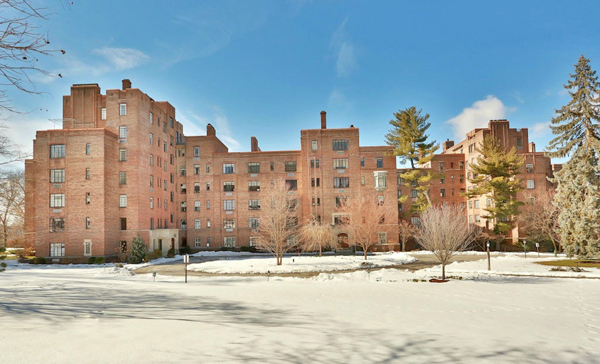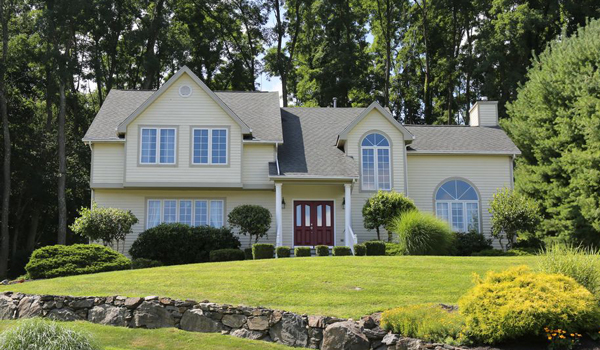Trending
Is Westchester’s starter home shortage here to stay?
Limited inventory in the under $1 million range continues to mean fast sales and bidding wars as buyers expand into the upper reaches of the county

If New York City has become too pricey, putting the idea of city living out of reach, first-time buyers these days can no longer count on going to Westchester to find that dream home.
An increasing inventory crunch continues to pressure the housing market, leading to the fewest number of properties for sale in decades. And that reduced supply is especially pronounced in the starter-home submarket, or those homes priced for about $1 million or less.
Though buyers from Brooklyn and Queens were expected to keep streaming north, certain fundamentals of the Westchester market — notably, a lack of willing sellers — means the product shortfall could linger for years, stymieing that flow. “It’s like a bottleneck, which is a struggle,” said Zef Camaj, an associate broker at Houlihan Lawrence, echoing other agents across the county.
Overall, inventory in the third quarter of 2017 stood at 4,203, which includes houses, condos and co-ops, according to market research from Douglas Elliman. That represents about a 5 percent tumble from the second quarter, when 4,431 properties were for sale.
And single-family houses are selling faster: Those priced at under $1 million spent an average of 75 days on the market through Dec. 6 of 2017, according to Camaj. In contrast, houses above $1 million spent an average of 97 days on the market, the agent said, citing data from the countywide Hudson Gateway Multiple Listing Service.
Plus, the market time for lower-priced houses seems to be contracting. In 2016, through Dec. 6, single-family houses for under $1 million spent an average of 83 days for sale, the data show. For houses over $1 million, it was 89 days, according to the data, suggesting a widening gap between the top and bottom of the market.
As buyers continue to look to Westchester for deals, the conditions might seem ripe for a seller’s market. Indeed, the uptick in demand seems to be translating into elevated prices — the median sales price in the third quarter was $535,000, according to Elliman, an increase of almost 3 percent over the previous year.

Zef Camaj
Yet, despite the seeming rise in motivation, for some — namely, those that bought in the heady days before the Great Recession — to sell would be to lose money. Those in the slower part of the county, north of Interstate 287, are particularly concerned. “Sellers are not willing to take a loss that they may have to incur if they bought at the height of the market,” said Victoria Miller, a saleswoman in Elliman’s Chappaqua office. “That height isn’t coming back anytime soon.”
Miller, who has sold real estate for 14 years, said that while values “down county” have fully recovered, prices in the more rural areas where she works are still off 20 percent from their 2007 peak. That’s still an improvement from around 2011, she added, when prices were depressed by 30 percent.
Another factor: Older homeowners, from the baby-boom generation, are breaking with tradition and keeping their houses off the market. People are living longer and retiring later, meaning there are fewer people trading in a four-bedroom in Scarsdale, say, for a two-bedroom on the beach in South Carolina.
“Now you just have a hip surgery or knee replacement, and you’re back playing golf in three months,” Camaj said. Children are living at their childhood homes longer than in the past, he added, giving parents another reason to stay in place.
Similarly, downsizing to move to an apartment in New York City — a trendy choice in the last boom — now has limited appeal. Condos and co-ops have grown comparatively expensive: The median price of a Manhattan apartment in the third quarter was a hefty $1.2 million, according to Elliman.
Supply is also crimped because in historic and well-heeled areas with strict zoning laws, new large-scale housing subdivisions are relatively rare.
One project in the pipeline is Toll Brothers’ Valeria Development, a planned 147-townhouse complex in Cortlandt Manor. But progress at the project has been slow; it opened in 2015 and is only about half constructed.
Westchester’s cities, including New Rochelle and Yonkers, have been adding new multifamily housing in recent years, but much of that product is rentals. And even then, large-scale new developments — even those outside the major cities — like AvalonBay Communities’ 152-unit Avalon Somers, now under construction in the town of Somers, are often already leased.
“Down County,” Up
Brokers say many of the buyers targeting the sub-$1 million market in Westchester continue to be members of the 20- and 30-something millennial generation, some of whom don’t have driver’s licenses. They are looking, then, at towns and villages with ample public transportation and walkable downtowns.

This four-bedroom house in Yorktown Heights, near the northern edge of the county, sold for $725,000.
Several communities still checking those boxes are in the Hudson River-lining “River Towns” — including Hastings-on-Hudson, Dobbs Ferry and Irvington — and they continue to reap rewards from a glowing article in the New York Times in 2013 dubbing them “Hipsturbia,” said Satoshi Maezono, an associate broker with Elliman.
“As soon as a good one comes on the market, it just goes,” said Maezono, who specified that the $500,000 to $900,00 bracket is a particular sweet spot. In Hastings in the past year, for instance, 42 single-family homes sold for less than $1 million, according to his data, and those houses were on the market for an average of 62 days.
The quickest? The sale of a 1970s contemporary with three bedrooms, two baths and a tall stone fireplace, located near the Saw Mill River Parkway. Listed at $689,000, it changed hands for $725,000 in a blink-of-an-eye 14 days, according to listing service data.
Fueling the velocity has been the presence of so many all-cash deals; they accounted for four of Maezono’s 12 transactions in the past year, he said.
One was for the sale of a two-bedroom, two-bath apartment at Hudson House, a red-brick prewar co-op near Metro-North’s Ardsley-on-Hudson station. It went on the market in February 2017 for $699,000 and closed in June for $762,000 in an all-cash deal after a bidding war, said Maezono, who listed it.
Buyers are keenly aware of losing time in these deals. Some are waiving appraisal, inspection and even mortgage contingencies. They don’t want to lose out to buyers moving quickly with cash, according to other agents.
While trains and walkability are key, brokers say, a vibrant nightlife is also a deal sweetener.
New Yorkers used to eating out have been intrigued by Westchester’s increasingly sophisticated restaurant options, Maezono said. Helping revitalize sleepy Dobbs Ferry over the past few years, for instance, are the Cookery and the Parlor, a pair of Italian restaurants from chef David DiBari, who once worked at Babbo in Manhattan’s West Village.
Westchester’s southern section may be all the rage, but the market is also hot above I-287, where buyers are being lured after being shut out elsewhere, according to brokers.
For a renovated three-bedroom house in Chappaqua with a “kind of Restoration Hardware feel,” listed at $799,000, Miller recently received nine offers, she said. The property eventually sold for $888,000.

Victoria Miller
Likewise, a four-bedroom house on a half-acre in Yorktown Heights that Camaj was marketing for $715,000 ended up attracting three offers and selling for $725,000 to first-time home buyers, he said. The house is near the Taconic State Parkway, a convenience that helps offset its somewhat remote location near the northern edge of the county, Camaj said.
Houses in that county submarket took an average of 73 days to sell in the third quarter, according to Elliman, down from 88 days in the year-ago period.
The Costs of Living
On the high end, prices in Westchester are clearly off. In the luxury market, which represents the top 10 percent of all sales, the average price in the third quarter was about $2.4million, Elliman reported. That was down 6 percent from the previous quarter, even though the number of sales ticked up and inventory dipped slightly, according to the data.
A major factor affecting the luxury sector across every submarket in Westchester is local taxes, which are among the nation’s highest. Even those who can afford a multimillion-dollar estate are often loath to pay large tax bills. Plus, the crop of wealthy Wall Street honchos that flooded the market in years past now seems to be more of a trickle, brokers say.
Taxes were already high, but they have recently climbed in places like the sprawling town of Greenburgh, which includes such villages as Tarrytown, Elmsford and Hastings. In 2016, after the first reassessment of real estate in 60 years, property taxes jumped in several communities — in Hastings, by 16 percent, and in the unincorporated sections of the town itself, by 34 percent.
That extra tax has had its most negative impact on the properties in the $1 to $2 million range, whose sales were already sluggish, brokers said.
More broadly, the new federal tax bill is also a cause for alarm in real estate circles in Westchester. Several of the new bill’s changes will affect real estate, but one that’s sure to hit Westchester: Homeowners can no longer deduct all their state and local taxes from their federal tax bill.
The cost of living in the county could spike in all categories. In the $1 million and under bracket, local property taxes are currently about $15,000 to $22,000 a year, Maezono said. With the tax deduction now capped at $10,000, “the market will change, I believe,” he said.
Miller is also pessimistic. “I have heard doomsday predictions that it could affect prices by 30 percent,” she said, explaining that sellers will now have to factor in the extra tax burden.
But the issues facing buyers today — a shortage of housing in New York City, a need for more space — aren’t likely to change anytime soon.
People will still pack up for the suburbs, Miller said, and all of those communities are expected to suffer under the new tax law. Like Westchester, Long Island and New Jersey will be hard hit, she said.
“It will be a rude awakening,” Miller said. “But there will be no safe haven.”




